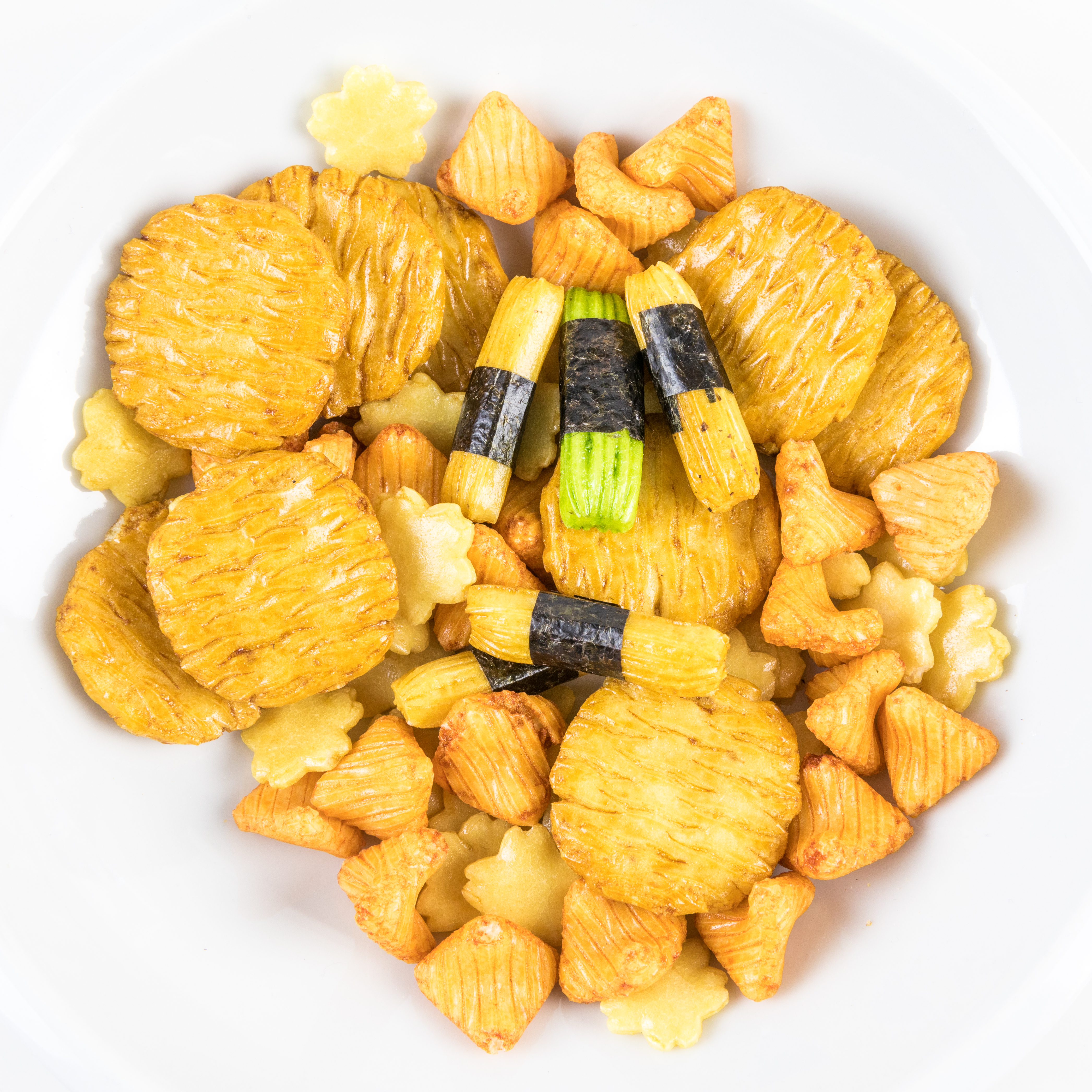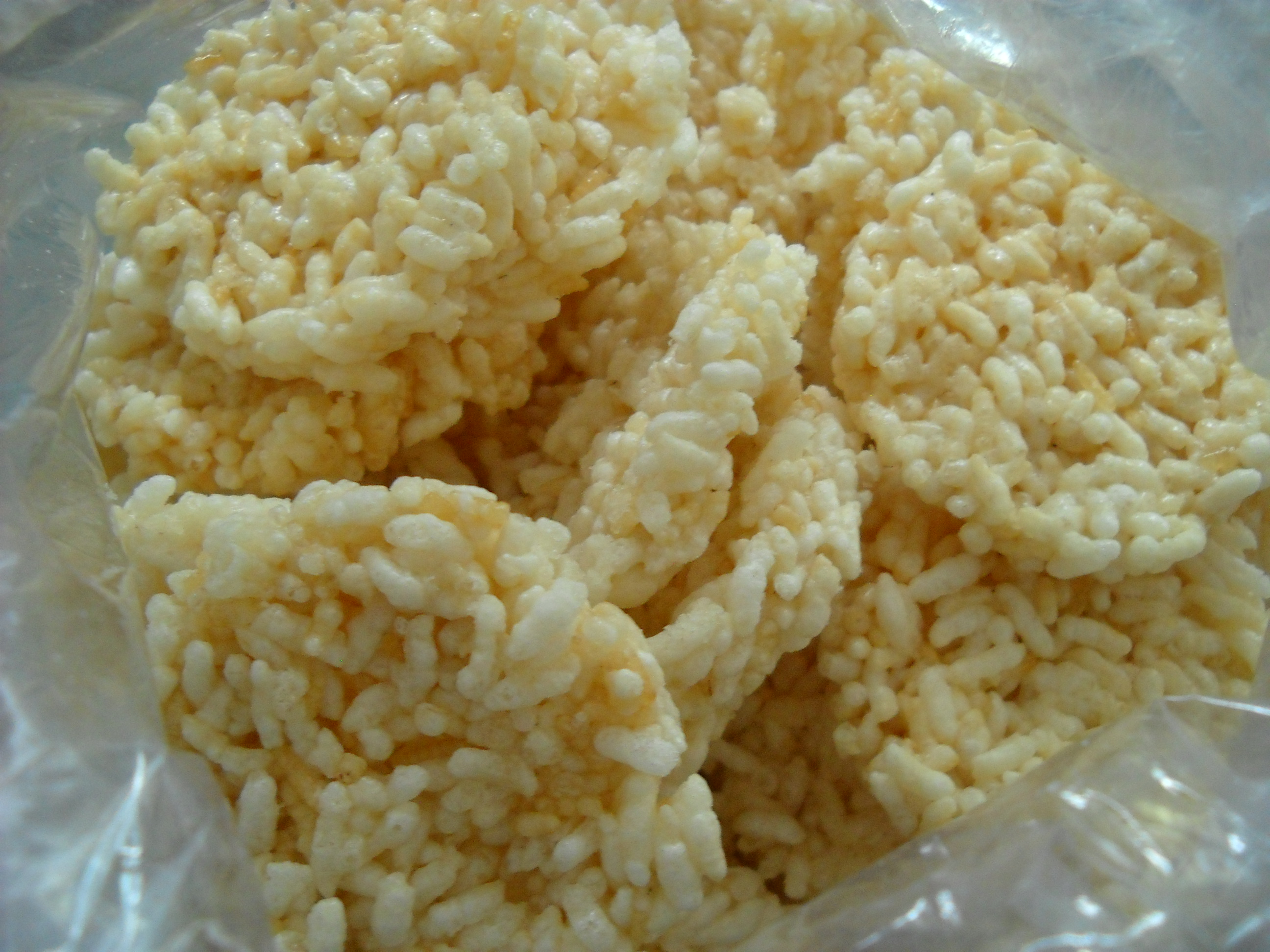rice cracker on:
[Wikipedia]
[Google]
[Amazon]
 A rice cracker is an East Asian cracker made from cooked rice or
A rice cracker is an East Asian cracker made from cooked rice or
 * Krupuk gendar, also known as ''krupuk puli'', ''krupuk karak'', ''krupuk beras'', or ''krupuk nasi'', is an Indonesian style ground rice cracker commonly found in Java island.
* Rengginang, a thick cracker made with
* Krupuk gendar, also known as ''krupuk puli'', ''krupuk karak'', ''krupuk beras'', or ''krupuk nasi'', is an Indonesian style ground rice cracker commonly found in Java island.
* Rengginang, a thick cracker made with
 A rice cracker is an East Asian cracker made from cooked rice or
A rice cracker is an East Asian cracker made from cooked rice or rice flour
Rice flour (also rice powder) is a form of flour made from finely milled rice. It is distinct from rice starch, which is usually produced by steeping rice in lye. Rice flour is a common substitute for wheat flour. It is also used as a thickening ...
. Many regional varieties exist, though most are fried or baked and puffed and/or brushed with soy sauce
Soy sauce (sometimes called soya sauce in British English) is a liquid condiment of China, Chinese origin, traditionally made from a fermentation (food), fermented paste of soybeans, roasted cereal, grain, brine, and ''Aspergillus oryzae'' or ''A ...
or vinegar
Vinegar () is an aqueous solution of diluted acetic acid and trace compounds that may include flavorings. Vinegar typically contains from 5% to 18% acetic acid by volume. Usually, the acetic acid is produced by a double fermentation, converting ...
to create a smooth texture. Some may also be wrapped in seaweed
Seaweed, or macroalgae, refers to thousands of species of macroscopic, multicellular, marine algae. The term includes some types of ''Rhodophyta'' (red), '' Phaeophyta'' (brown) and ''Chlorophyta'' (green) macroalgae. Seaweed species such as ...
.
Preparation
History
Rice crackers are thought to have originated during China'sHan dynasty
The Han dynasty was an Dynasties of China, imperial dynasty of China (202 BC9 AD, 25–220 AD) established by Liu Bang and ruled by the House of Liu. The dynasty was preceded by the short-lived Qin dynasty (221–206 BC ...
(c. 202 BC). Later, during the Tang dynasty
The Tang dynasty (, ; zh, c=唐朝), or the Tang Empire, was an Dynasties of China, imperial dynasty of China that ruled from 618 to 907, with an Wu Zhou, interregnum between 690 and 705. It was preceded by the Sui dynasty and followed ...
, there are records of senbei being served to houseguests as a token of courtesy. In Japan, they were popularized during the Edo period
The , also known as the , is the period between 1600 or 1603 and 1868 in the history of Japan, when the country was under the rule of the Tokugawa shogunate and some 300 regional ''daimyo'', or feudal lords. Emerging from the chaos of the Sengok ...
. The Japanese Soka senbei (made in Soka City, Saitama Prefecture
is a Landlocked country, landlocked Prefectures of Japan, prefecture of Japan located in the Kantō region of Honshu. Saitama Prefecture has a population of 7,338,536 (January 1, 2020) and has a geographic area of 3,797 Square kilometre, km2 ( ...
) is widely considered to be the first modern rice cracker.
Serving
Rice crackers are traditionally served with soup or salad, along withgreen tea
Green tea is a type of tea made from the leaves and buds of the '' Camellia sinensis'' that have not undergone the withering and oxidation process that creates oolong teas and black teas. Green tea originated in China in the late 1st millenn ...
and/ or alcoholic beverages
Drinks containing alcohol are typically divided into three classes—beers, wines, and spirits—with alcohol content typically between 3% and 50%. Drinks with less than 0.5% are sometimes considered non-alcoholic.
Many societies have a di ...
. In the western world, they are often eaten as a snack food in trail mixes along with ingredients such as wasabi peas, nuts, dried and salted edamame
is an East Asian dish prepared with immature soybeans in their pods, which are boiled or steamed, and may be served with salt or other condiments. The dish has become popular across the world because it is rich in vitamins, dietary fiber, and i ...
, and sesame sticks.
Types
Rice crackers are produced in several varieties and shapes. Some of the most popular are listed below.Cambodia
* '' Num kreab'', a round, flat Cambodian rice crackerJapan
* , a dry Japanese confectionery made from rice ** , a stone-shaped, bite-sized Japanese rice cracker *** ''Oriibu no hana'' ('olive flower') ** , a flat disk-shaped, palm-sized cracker traditionally eaten withgreen tea
Green tea is a type of tea made from the leaves and buds of the '' Camellia sinensis'' that have not undergone the withering and oxidation process that creates oolong teas and black teas. Green tea originated in China in the late 1st millenn ...
*** Shoyu senbei, a cracker brushed with soy sauce
*** Nori
Nori is a dried edible seaweed used in Japanese cuisine, usually made from species of the red algae genus ''Pyropia'', including ''P. yezoensis'' and ''Pyropia tenera, P. tenera''. It has a strong and distinctive flavor, and is generally made in ...
senbei, a cracker toasted and wrapped in dried sushi nori
*** Kuro goma senbei, a nutty cracker speckled with black sesame seeds
*** Togarashi senbei, a spicy cracker coated in red chili powder and flakes
*** Ika senbei, or ''Ika sen'', a cracker baked with grilled squid
*** Ebi senbei, or ''Ebi sen'', a cracker baked with minced shrimp
A shrimp (: shrimp (American English, US) or shrimps (British English, UK)) is a crustacean with an elongated body and a primarily Aquatic locomotion, swimming mode of locomotion – typically Decapods belonging to the Caridea or Dendrobranchi ...
*** Kuromame senbei, a cracker made with dough mixed with black soybeans
*** Zarame senbei, a cracker sprinkled with crystals of sugar
** Kaki no tane, a small, seasoned crescent-shape snack that bears a resemblance to peanuts
Indonesia
 * Krupuk gendar, also known as ''krupuk puli'', ''krupuk karak'', ''krupuk beras'', or ''krupuk nasi'', is an Indonesian style ground rice cracker commonly found in Java island.
* Rengginang, a thick cracker made with
* Krupuk gendar, also known as ''krupuk puli'', ''krupuk karak'', ''krupuk beras'', or ''krupuk nasi'', is an Indonesian style ground rice cracker commonly found in Java island.
* Rengginang, a thick cracker made with sticky rice
Sticky may refer to:
Adhesion
*Adhesion, the tendency of dissimilar particles or surfaces to cling to one another
*Sticky mat, an adhesive mat used in cleanrooms to lessen contamination from footwear
*Sticky note, a generic term for a Post-it Note ...
granules.
See also
* Puffed grain ** Puffed rice *Rice flour
Rice flour (also rice powder) is a form of flour made from finely milled rice. It is distinct from rice starch, which is usually produced by steeping rice in lye. Rice flour is a common substitute for wheat flour. It is also used as a thickening ...
References
{{reflist Rice crackers